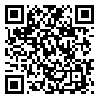Thu, May 8, 2025
[Archive]
Volume 13, Issue 3 (September 2017)
IJEEE 2017, 13(3): 246-256 |
Back to browse issues page
Download citation:
BibTeX | RIS | EndNote | Medlars | ProCite | Reference Manager | RefWorks
Send citation to:



BibTeX | RIS | EndNote | Medlars | ProCite | Reference Manager | RefWorks
Send citation to:
Ehsaeyan E. A Novel NeighShrink Correction Algorithm in Image Denoising. IJEEE 2017; 13 (3) :246-256
URL: http://ijeee.iust.ac.ir/article-1-971-en.html
URL: http://ijeee.iust.ac.ir/article-1-971-en.html
Abstract: (4812 Views)
Image denoising as a pre-processing stage is a used to preserve details, edges and global contrast without blurring the corrupted image. Among state-of-the-art algorithms, block shrinkage denoising is an effective and compatible method to suppress additive white Gaussian noise (AWGN). Traditional NeighShrink algorithm can remove the Gaussian noise significantly, but loses the edge information instead. To overcome this drawback, this paper aims to develop an improvement shrinkage algorithm in the wavelet space based on the NeighSURE Shrink. We establish a novel function to shrink neighbor coefficients and minimize Stein’s Unbiased Risk Estimate (SURE). Some regularization parameters are employed to form a flexible threshold and can be adjusted via genetic algorithm (GA) as an optimization method with SURE fitness function. The proposed function is verified to be competitive or better than the other Shrinkage algorithms such as OracleShrink, BayesShrink, BiShrink, ProbShrink and SURE Bivariate Shrink in visual quality measurements. Overall, the corrected NeighShrink algorithm improves PSNR values of denoised images by 2 dB.
Type of Study: Research Paper |
Subject:
Image Processing
Received: 2016/07/07 | Revised: 2017/12/09 | Accepted: 2017/09/11
Received: 2016/07/07 | Revised: 2017/12/09 | Accepted: 2017/09/11
| Rights and permissions | |
 |
This work is licensed under a Creative Commons Attribution-NonCommercial 4.0 International License. |








